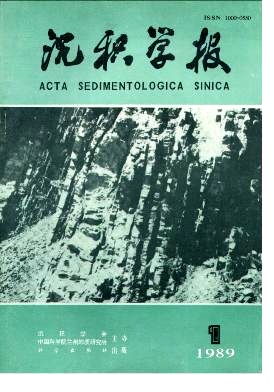STUDYING ON SOURCE OF ORGANIC SEDIMENT IN THE CHANGJIANG ESTUARY AND ADJACENT CONTINENTAL SHELF BY THREE DIMENSIONAL TOTAL SCANNING FLUORESCENCE
- Received Date: 1986-10-11
- Publish Date: 1989-03-10
Abstract: Fluorescence spectroscopy is a useful technique for the characteristion of hydrocarbons mixture in the marine enviornment and panicularly useful for the detection and measurement of organic compounds with one to four or more aromatic ring.However, by using fixed wavelength and synchronous scanning fluorescence, spectra of complex mixture can not be satisfactory resolved. A newly developed three dimensional total scanning fluorescence by Brooks and Kennicutt can overcome these disadvantages above mention, and it can combine with computer to process all datum acquied rapidly and accurately. This paper is to demonatrate polynuclear aromatic hydrocarbons in surface sediments which were semi- quantitatively determined by three dimensional total scanning fluorescence for nine stations on a transect of the Changjiang estuary and adjacent continental shelf (30 ° 16 ' to 31°30 ' N and 123 ° 30 ' to 124°30 ' E) . These samples were taken from the top 10cm section of each core, The percent content of total organic carbons (0. 39 to 0. 13% ) and extractable lipids( 63 to 20ppm) were also determined. Both of which decreased dramatically for these stations within the east of 123 ° E. The fluorescence measurement was conducted on a perkin - Elmer (PE) 650-40UV spectrofluorometer controlled by PE-3600 data station with special " SCANR" program by Brooks . Both the hexane and methylene dichloidc sediment extracts were scanned directly, after concentration by Rotovaparation, within a 200to 600nm for both emission and excitation wavelength to acquired a three dimensional total scanning fluorescence spectrum of emission wavelength, excitation wavelenegth and intensity, and contour presentations, the fluorescence results acquired were very similar to those of recent marine sediments from other continental shelf areas. Perylene was detected in sediment for all stations. Become well known, perylene is one of characteristic organic compounds of typical terrigenous higher plant, Therefore, it might be thought that organic matter presented in sediment came from river load. Both concentration of total aromatic hydrocarbons and perylene decreased generally with distance from shore. Their average fluorescence intensity ( 154542 and 1678 respectively )for the first five stations of the west of 123 ?E were markedly higher more than for the second four stations at the east of 123 ° E (62216 for PAHs and 371 for perylene respectively ) . By comparing three dimensional total scanning fluorescence presentation of authantic standards, it showed that fluorescence results acquired for less than 370nm of excitation wavelength belonged to non - perylene aromatic mixture with two to four rings. The non - perylene fluorescence intergrated intensity was found to be more than 80 percent for both hexane and methylene dichloride extracts for the first three stations at nearshore, and more than 60% for most of stations. And decreased generally with distance offshore. The more intense the non - perylene fluorescence the greater the amount of migrated hydrocarbons in the sediment samples. On the basis of the fact that the non - perylene aromatic hydrocarbons concentration is heigher at near Changjiang mouth and lower seaward . It is must likely that the migrated hydrocarbons in sediments primarilly came from Changjiang river loads. Most of them were first deposited into seabottom. By comprehension studying these data acquired and their variance trends in amount for hydrocarbons, it might be thought that organic matter in sediment mainly comes form Changjinag river terrigenous suspended matter and also decreased with distance from river mounth. Most of them were deposited to the west of 123 ° E in Changjiang estuary. It is in agreement those of other methods by authors of this paper and of other marine geologists for the same study area.
| Citation: | Zhu Guihai, Jame M.Brooks. STUDYING ON SOURCE OF ORGANIC SEDIMENT IN THE CHANGJIANG ESTUARY AND ADJACENT CONTINENTAL SHELF BY THREE DIMENSIONAL TOTAL SCANNING FLUORESCENCE[J]. Acta Sedimentologica Sinica, 1989, 7(1): 117-125. |






 DownLoad:
DownLoad: